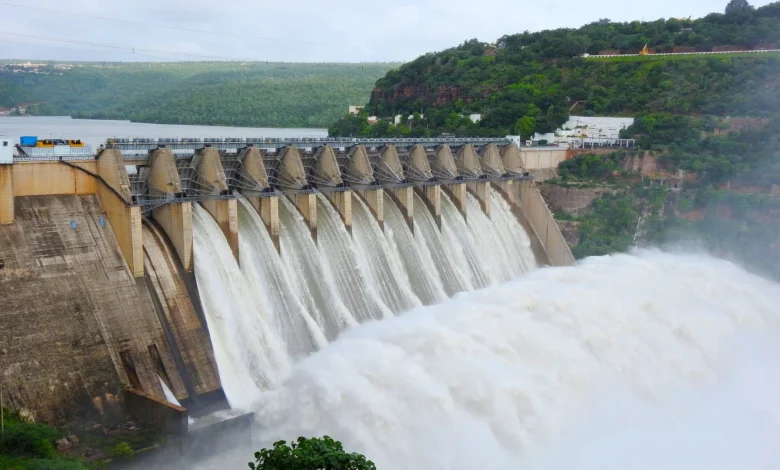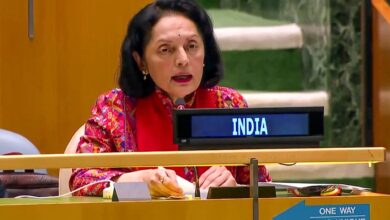
Under the ‘neighborhood first’ approach of Prime Minister Narendra Modi, India has granted real-time access to its energy market to Bangladesh, Bhutan, and Nepal. This development enables all three nations to engage in real-time buying and selling of power within the energy market, aligning with a significant demand from each country. The anticipated outcome is a strengthening of New Delhi’s diplomatic relations with these nations.
Just last week, the Central Electricity Authority (CEA) operating under the Ministry of Power introduced revisions to the protocols governing the approval process for cross-border energy trade involving the three countries.
Until this point, the trio of nations had exclusive access solely to India’s ‘day ahead market’ (DAM) within the energy sector. This marketplace establishes electricity prices and quantities one day prior to the physical trading taking place. However, this approach was resulting in wastage of electricity generated by Nepal and Bhutan, particularly during the monsoon season, due to surplus production.
Prabal Adhikai, the power trade director of Nepal Electricity Authority (NEA), explained the predicament, stating, “Anticipating the exact surplus electricity production beyond our domestic needs for any given day proved impractical. Relying solely on the DAM system, we had to make educated guesses. In cases where the actual excess production exceeded our earlier estimates, which was frequently the case, we had to contend with the significant drawback of electricity wastage. This translated to substantial financial losses for us.”
“We stand to gain advantages on multiple fronts, particularly in both importing and exporting power, especially during unexpected shifts in demand,” Adhikari conveyed in a telephone conversation from Kathmandu.
Adhikari elaborated on the positive outcomes, highlighting that Nepal will experience significant gains through immediate entry into India’s energy market, facilitating efficient power export and import. This will be particularly advantageous in alignment with fluctuations in domestic power demand and generation levels.
He further emphasized, “In scenarios where an abrupt power plant outage causes an unexpected drop in production, we now have the capability to promptly import power to bridge the demand shortfall, effectively averting any potential blackouts,” he emphasized.
As a result of the CEA’s amendment, any Indian power trader is now authorized to engage in trading at the Indian Power Exchange, encompassing both the ‘day ahead market’ (DAM) and the ‘real-time market’ (RTM), representing entities from Bangladesh, Bhutan, and Nepal. This privilege, however, is contingent upon securing approval from the designated regulatory authority.
Nevertheless, this amendment maintains the prohibition on trading power derived from power plants established by China within Nepal. Consequently, electricity generated from these specific plants remains ineligible for trading within the Indian energy market. The CEA has emphasized once again that exclusively electricity produced by a power plant, either owned or under the control of a neighboring nation, and with which India has entered into a power cooperation agreement, will be eligible for trading within the ‘real-time market’ (RTM).
Suresh Bhattarai, spokesperson for the Nepal Electricity Authority (NEA), noted that until this point, Nepal was obligated to adhere to its commitment of selling designated power to purchasers, even during unforeseen emergencies such as power plant outages that result in disruptions to domestic power distribution.
“By having access to the real-time market (RTM), we now have the capacity to increase electricity sales beyond our initial estimates in situations where power generation experiences a sudden surge within a short timeframe. Conversely, buyers can adjust their power purchases downward if they encounter a rapid decrease in demand. This dynamic presents a mutually beneficial arrangement for both parties,” Bhattari explained.
Nepal procures electricity from India in the dry season, a period marked by reduced electricity production from its hydropower plants due to diminished water reservoir levels. However, the situation shifts during the monsoon season, when these reservoirs become replenished and begin to overflow, resulting in a significant surge in power generation and leaving the nation grappling with an excess of electricity.
NEA Director Adhikari emphasized that going forward, Nepal will have the capability to guarantee a continuous and uninterrupted electricity supply to its domestic consumers year-round. Additionally, this new access will enable Nepal to generate substantial additional revenue by engaging in trading within the regional energy market.
Nima Tshering, Director of Bhutan’s Electricity Regulatory Authority (ERA), conveyed to Swarajya that the granted access to India’s real-time energy exchange, provided by New Delhi, holds the potential to significantly enhance Bhutan’s power sector as well.
The streamlined process of selling power within the real-time market is poised to enhance the profitability of power plants in Bhutan. Tshering highlighted that this improvement is expected to act as a catalyst, drawing new investments into the hydro-power sector within the Himalayan kingdom.
Ashish Garg, Vice-President of the Independent Power Producers’ Association of Nepal (IPPAN), emphasized that with Nepal’s crucial demand for RTM access now fulfilled, the subsequent progression involves establishing long-term trade agreements with Indian companies for the sale of power within the Indian market.
Ashish Garg expressed his appreciation for the newly established access, enabling Nepal to engage in real-time trading within India’s energy market. However, he clarified that while this represents a significant step, it doesn’t inherently ensure sustained access for power generated by Nepal’s energy companies within the Indian power market. Garg emphasized that the key lies in forging long-term energy agreements with Indian counterparts, a move that would not only secure market access but also stimulate increased investments in Nepal’s power sector.
The decision to grant Nepal, Bhutan, and Bangladesh access to the real-time market (RTM) was the outcome of a significant high-level meeting between officials from Nepal and India held in Jaipur in February of this year. As part of the deliberations, both parties also committed to expanding power trade and enhancing cross-border transmission infrastructure. This joint effort aims to amplify bilateral electricity trade by upgrading existing transmission lines and constructing new ones.
Nepal has expressed its desire for New Delhi to enter into a comprehensive 25-year intergovernmental framework agreement. This agreement would pertain specifically to the sale of power generated within Nepal to India.
This accord, which was initially outlined during the visit of Nepal’s Prime Minister Pushpa Kamal Dahal to India between May 31 and June 3 of this year, holds the promise of ensuring enduring and stable access for Nepal’s power to the Indian market over the long term.
In a recent development, India has granted permission for the utilization of high-power transmission lines traversing its territory. This clearance facilitates the export of power from both Nepal and Bhutan to Bangladesh. This decision, which had been eagerly sought by all three nations, was warmly received as New Delhi extended its approval. This event served as yet another significant milestone, underscoring the progress in the multilateral relationships among the four neighboring South Asian countries.



